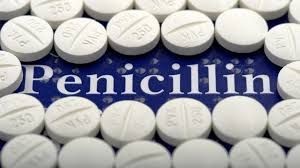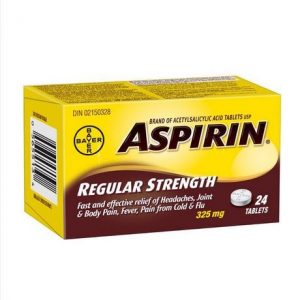Without names companies cannot sell their products. Just as people are known by their names, brands also are named. Established brands make their company famous; people recognize companies by their famous brands. Brand names are most important attribute of a product after its quality and packing from end user’s point of view. The world recognizes brand names for their quality, efficacy and reliability. Pharma brands such Vicks, Iodex, Crocin, Corex, Lipitor, Gleevac are kept in the first aid box in almost all homes.
A brand is a name, design, logo or a symbol which allows us to differentiate one product from the other. We get used to a brand for the trust it imposes in our minds. We accumulate faith in a brand after using it for little time. Our each time experience matters. In case of pharma brands, the customers are the patients who buy medicines recommended by physicians. Naming a pharma brand, designing its logo and packaging is a challenging job. Do you know, a drug, in its lifetime gets renamed multiple times according to its life cycle. The first time it gets the drug company’s cryptic internal designation.
Though, name of a drug is a comparatively lesser complicated than its formulation and efficacy, much is at stake in getting drugs named correctly. The cause is because mistaken prescriptions are a big contributor to the overall tally of medical errors. Each drug has many substitutes in market and this can lead to mistaken identity. The process of naming medicines has been a slow movement: as drugs moved beyond their earliest spiritual and religious applications, it became clear that strictness was required, both in preparation and in cataloguing. Assembling pharmacopoeias, which list active ingredients and describe known drugs, eventually became the province of governments—first local, then national and by now a global co-ordinated transnational effort. So how, today, do drugs get their names?
A marketed drug by Pharma Company has three names: chemical name, generic name, and a brand name. The chemical name is decided on the basis of chemical structure of drug and is used primarily by researchers. A drug’s chemical name is longish and usually difficult to pronounce and remember by the common people – the consumers. Therefore, the consumers, physicians, and pharmacists for the sake of making it easier for selling refer the drug’s generic name. The chemical name is generally not used in practice, unless it becomes the established or used name such as sodium chloride. Chemical names are not given in any of the standard manuals, such as the Physicians’ Desk Reference, official books like United States Pharmacopeia (USP), or available software.
The U.S. Adopted Names Council (USAN) has some rules, such as: “Prefixes that imply ‘better,’ ‘newer,’ or ‘more effective;’ prefixes that suggest the name of the sponsor, dosage type; duration of action or rate of drug release should not be used. Prefixes that refer to an anatomical connotation or medical condition are not acceptable. Certain letters or sets of letters also aren’t allowed at the beginning of new generic names. These include me, str, x, and z.
Every name has two main parts. The back half of the drug name is the same for all drugs in a particular class — for instance; there are whole rafts of cholesterol-lowering drugs that end in -vastatin: atorvastatin (Lipitor), fluvastatin (Lescol), rosuvastatin (Crestor), simvastatin (Zocor), and several others. Some other class suffixes include: oxetine for a class of antidepressants, such as fluoxetine (Prozac), sartan for a class of blood-pressure-lowering drugs, such as losartan (Cozaar), afil for a class of drugs used for erectile dysfunction, such as sildenafil (Viagra), lukast for a class of anti-asthma drugs, such as montelukast (Singulair).
Do you know Viagra is named to suggest Vitality and Agriculture – which tells you nothing about what it is made from – just where it came from – it was originally an animal research drug? Its competitor ‘Cialis’ is actually a French family name in French Canada. Apparently this was overlooked and an accidental slipup. The family is rather upset as the drug is used for male potency is trademarked after their name.
A persuading and powerful brand name delivers immediate, direct benefits in terms of sales and consumer loyalty, as well as indirect competitive advantages when raising capital or offering shares of stock to the public. Farxiga, Hetlioz, Otezla are pharma brand names that sound so weird. They are lately approved by the Food and Drug Administration. Drug names have been getting weirder because as the FDA approves new medicines at record rates and the regulations require a certain degree of differentiation from other drugs and recognizable words be it in any language. The more drugs that come out every year from pharma companies, the more innovative the names need to be. It is difficult to get simple, uncomplicated names.
Another major reason for taking the necessary steps to select the best available brand name is to protect the owner’s already sizable investment of time, money, and resources in developing the drug. Maintaining security has become a major element in the naming of a new proprietary drug because consumers get perplexed over drug’s brand names which can have deadly consequences. A pharmaceutical brand is different from other brands in the sense that the former has a generic name too besides a name given by proprietor of that product. If the company launches a new drug molecule in market with a convincing, impressive and perpetual name which can be recalled easily by the doctors and patients. The name should have a good recall values. Corex, Steptsils, Gelusil are remembered easily because of their uncompromised quality.
Penicillin is a word coined by Alexander Fleming who shared the Nobel Prize in Physiology/ Medicine for his work on Penicillin. The name is derived from the fungus Penicillium notatum whose important antibacterial properties were noticed by Fleming. The name of the fungus comes from its shape which resembles a paintbrush which in Latin is penicillus. Similarly, Morphine was discovered by a German pharmacist and is of Latin roots. The name comes from the drug’s sleep inducing properties as the God of dreams called Morpheus by the Roman poet Ovid.
Aspirin which is one of the most common drugs in the world, few users of this useful medicine would know where the word comes from. Salicyclic acid was called spirsäure in German in the 19thcentury; this word comes from Spiraea a plant from which salicyclic acid was purified. The plant’s name comes from Greek word speira meaning coil or spire. Since the acid exists as acetylsalicylic acid, Felix Hoffmann who synthesised the drug while working for Bayer, an ‘A’ for acetyl was added to the front of the Germanic word for the acid and it was patented as Aspirin.
Drug’s official name is generic name throughout its lifetime world over regardless of who made it, how it was made, where it was devised. Generic name is commonly used by health care professionals and is usually created when a new drug is ready to be marketed. Although the manufacturer or sponsor of the drug has the exclusive right of manufacture during the 20 years of the drug’s patent, it never owns the generic name. The manufacturer or sponsor of the drug usually initiates the request for a generic name, but the generic name is always in the public domain and there is no need of using such letters as TM or ® or © with generic names.
Why do some branded drugs cost more than generics? It takes several years, costly scientific development and many clinical studies to get a drug approved. Manufacturers of new brand name drugs which are also called “pioneer drugs” usually take on the research and development costs for new medications, https://www.urgentway.com/online-pharmacy/. These research and development costs, along with marketing costs, account for most of the higher prices we pay for most brand name drugs. In contrast, generic drugs have less research and development costs since the original manufacturer has already done many studies to make sure the drug is safe. These savings are passed on to the consumer. However, while the brand name form is still protected by its patent, it cannot be produced as generic. And, if a brand name drug has only just recently lost its patent, there may only be one generic form available. Usually, when there’s only one generic option available, it will be more expensive.
Typically, new drugs end up with a monopoly for roughly a dozen years. Their makers generally increase their prices every year, by about 5% or more. Those increases add up and become bigger as the expiration of the patent approaches. For many drugs, there isn’t enough competition to hold down prices. Many older generic drugs are priced too low to be profitable, so some drug makers stopped making them. Usually when only one company or two companies make a drug, the price usually shoots up. For older, brand-names that treat conditions too rare to attract multiple manufacturers, the sole maker has a de facto monopoly. This is the reason why brand name matters in pharma business.















































